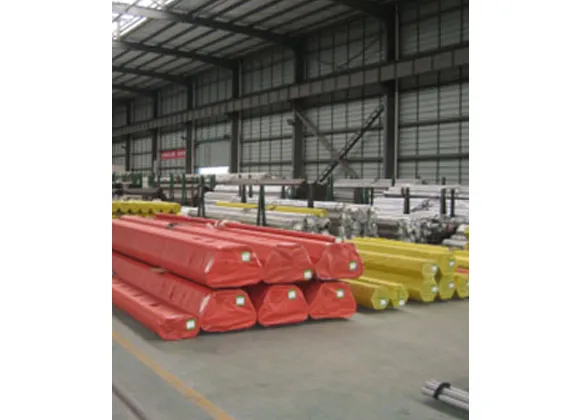Feb . 15, 2025 17:30
Choosing the right non-return valve with a flange type can significantly impact the efficiency and safety of industrial operations. This guide offers a deep dive into the intricacies of these essential components, shedding light on their applications, benefits, and what to consider when selecting them.

Non-return valves, often referred to as check valves, are paramount in systems where reverse flow must be prevented. They ensure that a medium, whether it be liquid, gas, or steam, flows in a single direction, thus safeguarding equipment and avoiding system malfunctions. Among the variations available, the flange type non-return valve stands out for its robustness and ease of installation.
The design of flange type non-return valves typically features bolt holes around the perimeter, allowing for a secure and leak-proof connection with pipes or other components. This flange-based design ensures the valve can withstand high pressure and temperature conditions, making it ideal for rigorous industrial environments such as water and wastewater treatment plants, petrochemical industries, and power generation facilities.

Each flange type non-return valve boasts a unique set of advantages. Durability is at the forefront, thanks to the use of materials like stainless steel, cast iron, or bronze, which provide excellent resistance to corrosion and wear. This durability translates to a longer lifespan and reduced maintenance costs, offering economic benefits alongside functional ones.
When choosing the right flange type non-return valve, consideration of the pressure rating is crucial. Valves are rated for different pressure levels, and selecting one that matches the system’s pressure conditions is essential to ensure optimal performance and safety. Similarly, attention should be paid to temperature ratings, as certain materials perform better under specific thermal conditions, preventing failures that can lead to costly downtime and repairs.
The size of the valve is another pivotal factor. Proper sizing ensures minimal flow restriction and energy consumption, increasing the overall efficiency of the system. Consulting with a specialist can aid in matching the valve size with the piping system for seamless integration and operation.
non return valve flange type
Installation is streamlined with flange type non-return valves due to their standardized dimensions and fittings, which minimize the risk of leaks and misalignments. The maintenance process is often straightforward, involving periodic inspections to ensure the valve remains free of debris and functions as intended. Regular maintenance checks are vital to prolonging the life of the valve and ensuring it operates without hitches, protecting the system it serves.
Remarkable advancements in technology have also introduced smart diagnostics and monitoring solutions for non-return valves. Integrating sensors and other monitoring tools allows for real-time tracking of valve performance, early detection of potential issues, and predictive maintenance scheduling. These innovations enhance system reliability and reduce unexpected failures, reinforcing the credibility and authoritativeness of modern flange type non-return valves.
A critical aspect of selecting a flange type non-return valve is compliance with industry standards, such as those set by ASME, API, or DIN. Ensuring that the valve meets these standards is a testament to its quality and reliability, lending an extra degree of trust and peace of mind to users.
Furthermore, sustainability considerations are becoming increasingly important in valve selection. Opting for valves that support efficient energy use and reduce environmental impact reflects a commitment to eco-friendly practices.
In conclusion, selecting the appropriate non-return valve flange type requires a comprehensive understanding of the specific requirements of the application. The reliability, efficiency, and safety of an industrial system can hinge on this choice. With the correct valve, operators can not only enhance their system’s performance but also extend its lifespan, reduce operational costs, and contribute to sustainable practices. Professionals and engineers alike should collaborate closely with suppliers to ensure that the chosen valve meets the strictest standards of quality and performance, solidifying its role as a critical component in the infrastructure of industrial facilities.


 Call us on:
+86-311-86935302
+86-311-86935302
Call us on:
+86-311-86935302
+86-311-86935302
 Email Us:
info@thriveonvalve.com
Email Us:
info@thriveonvalve.com South of Huanmadian Village Town, Ningjin County, Xingtai, Hebei Province, China
South of Huanmadian Village Town, Ningjin County, Xingtai, Hebei Province, China